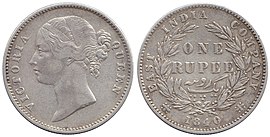Coins have long been more than just a medium of exchange. They are windows into the past, offering glimpses into the economies, politics, art, and cultures of ancient civilizations. The origins of ancient Indian coinage can be traced back to between the 1st millennium BCE and the 6th century BCE. During this period, coins were primarily crafted from copper and silver.
These early coins were mostly stamped metal bars, influenced by the currency in circulation during the Janapada period of early Indian history. As different dynasties emerged, the design and use of these coins evolved, reflecting the growing complexity of trade and economy in ancient India.

Influence of Greek and Roman Coins
During the Hellenistic period, Greek and Roman coins reached India through established trade routes, leaving a notable impact on Indian numismatics. These foreign coins, referred to as “Yavanika,” circulated alongside local currency, reflecting a rich cultural exchange. The presence of Greek and Roman motifs on ancient Indian coins highlights this blend of artistic traditions and the interconnectedness of civilizations during that era.
Gupta and Kushan Coins
The Gupta Empire, celebrated as India’s Golden Age, introduced exquisite gold coins renowned for their intricate artistry and high gold purity. These coins featured images of rulers, deities, and symbols of power and prosperity. Similarly, Kushan coins, especially those from the reign of King Kanishka, exhibited a unique blend of Greek, Indian, and Persian influences, showcasing the empire’s diverse cultural interactions.
Coinage by the Imperial Cholas
The coins of the Chola Empire share distinct similarities with those of other South Indian dynasties. A prominent feature of Chola coins is the consistent depiction of the tiger crest. The presence of symbols like the fish and bow—emblems linked to the Pandyas and Cheras respectively—on Chola coinage indicates both the political dominance over these powers and the incorporation of their established coinage traditions.


British Colonial Period
Uniform coinage in India began in 1835 under British rule, featuring East India Company coins with William IIII’s image. In 1840, Queen Victoria’s portrait replaced his, but the design remained the same. The 1862 coins introduced major changes—’India’ replaced East India Company, and Victoria’s image was updated to show her in regal attire. In 1877, her title changed to “Empress of India” on coins. This design lasted until 1938, with only the ruler’s image changing. The rupee’s weight and purity remained consistent throughout at 11.66 grams and 91.7%.
The legacy of ancient Indian coins is invaluable. These coins are windows into a past where kings and emperors communicated their power, culture, and religion through intricate designs and symbols. Today, these ancient coins are not only studied by historians and numismatists but also cherished by collectors as timeless treasures that narrate the rich tapestry of India’s ancient civilization.
Ancient Indian coins remind us of the significance of currency in shaping society, influencing trade, and fostering cultural exchange across the globe. As artifacts, they continue to inspire awe, standing as witnesses to India’s enduring legacy through the ages.







